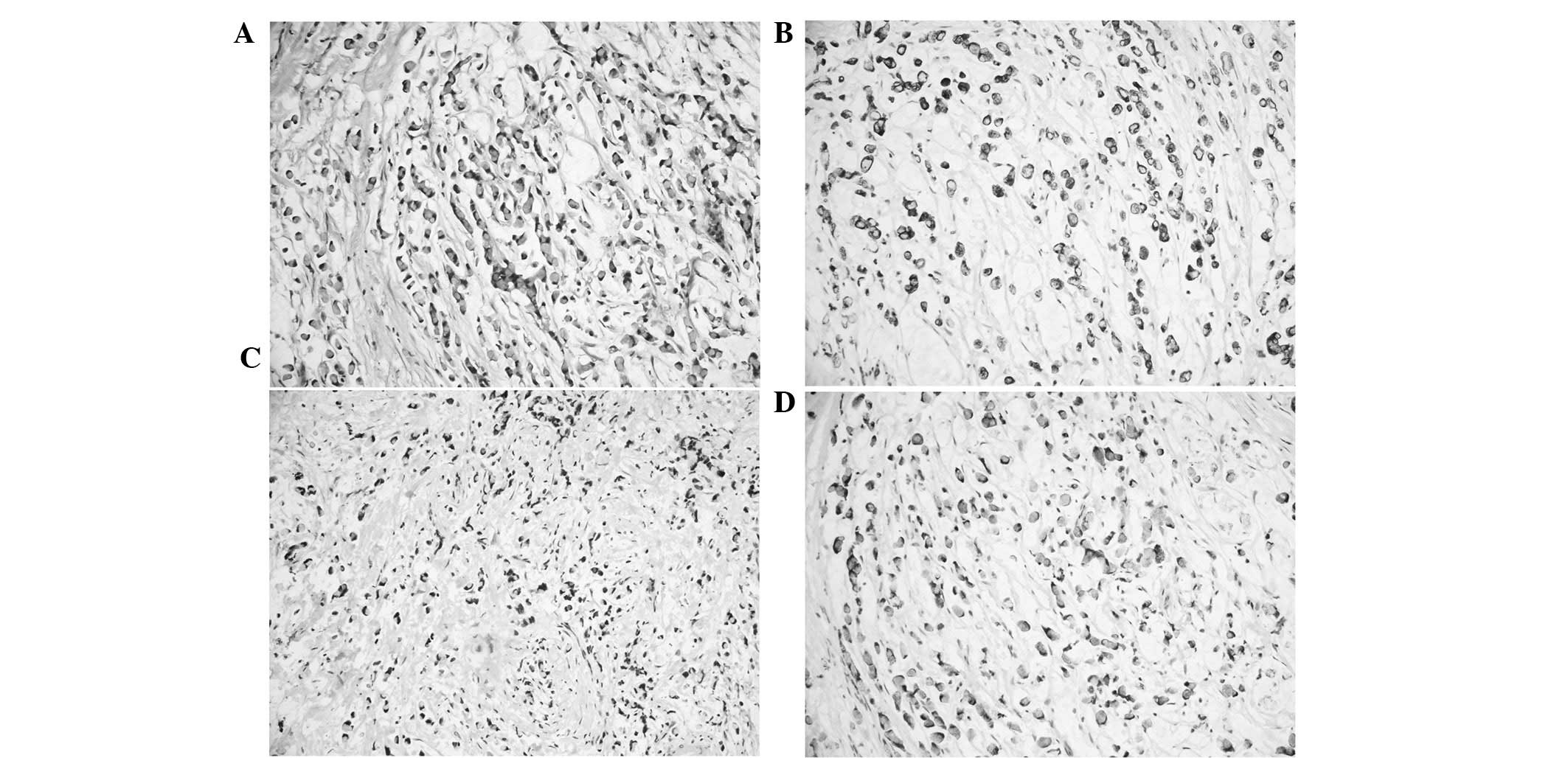Signet ring cell carcinoma of the ampulla of Vater: Immunophenotype and differentiation
- Authors:
- Published online on: July 11, 2014 https://doi.org/10.3892/ol.2014.2344
- Pages: 1687-1692
Metrics: Total
Views: 0 (Spandidos Publications: | PMC Statistics: )
Total PDF Downloads: 0 (Spandidos Publications: | PMC Statistics: )
Abstract
Signet ring cell carcinoma (SRC) of the ampulla of Vater is extremely rare and the histogenesis remains unknown. In the present study, to investigate the immunohistochemical phenotypes, discuss the histological origin and evaluate the correlation between the immunohistochemical phenotypes and survival of ampullary SRC patients, a retrospective review was conducted. This included all ampullary carcinoma patients treated at The First Affiliated Hospital, College of Medicine, Zhejiang University, and was performed over a five‑year period between 2008 and 2012. Eight resected ampullary SRC specimens were examined histopathologically and immunohistochemically, using cytokeratin (CK) and mucin (MUC) immunohistochemical phenotypes. Of all 162 patients with ampullary lesions, eight cases (4.9%) of ampullary SRC were identified. Immunohistochemical analyses of the eight cases revealed the positive expression of CK7 in five, CK19 in seven, CK20 in one, MUC1 in five, MUC2 in three, caudal‑related homeobox transcription factor 2 in one, MUC5AC in seven and MUC6 in four of the eight cases, while loss of E‑cadherin and β‑catenin was observed in four of the eight cases. According to immunohistochemical classification, ampullary SRC can be classified into four subtypes: Intestinal (I), pancreatobiliary (PB), gastric and mixed types (composed of I mucosa lining and PB epithelium). Patients with the I‑type ampullary SRC demonstrated a more favorable prognosis than that of patients with the PB‑type ampullary SRC. Additionally, patients with ampullary SRC of I or PB type with gastric differentiation may have a worse prognosis than others. The coexpression of the E‑cadherin/β‑catenin complex may also indicate poor prognosis in PB‑type ampullary SRC. In conclusion, the clinical five‑year follow‑up of the patients with pure SRC was more positive than that of those with I‑, PB‑, gastric‑ or mixed‑type ampullary SRC. The coexpression of the E-cadherin/β-catenin complex may present a poor prognosis in the PB type of ampullary SRC.











